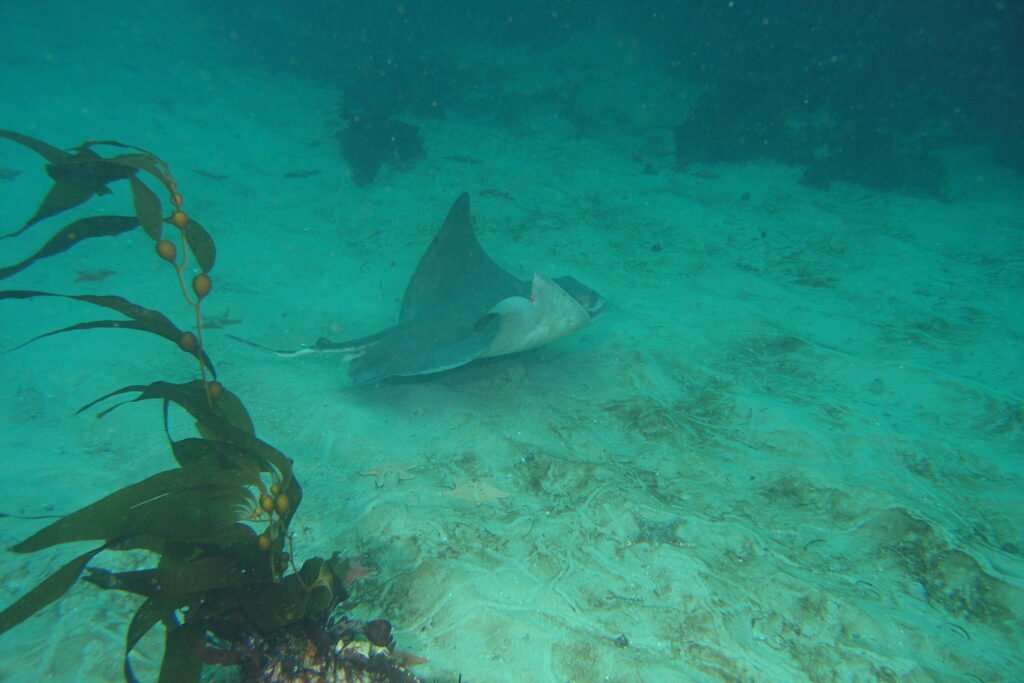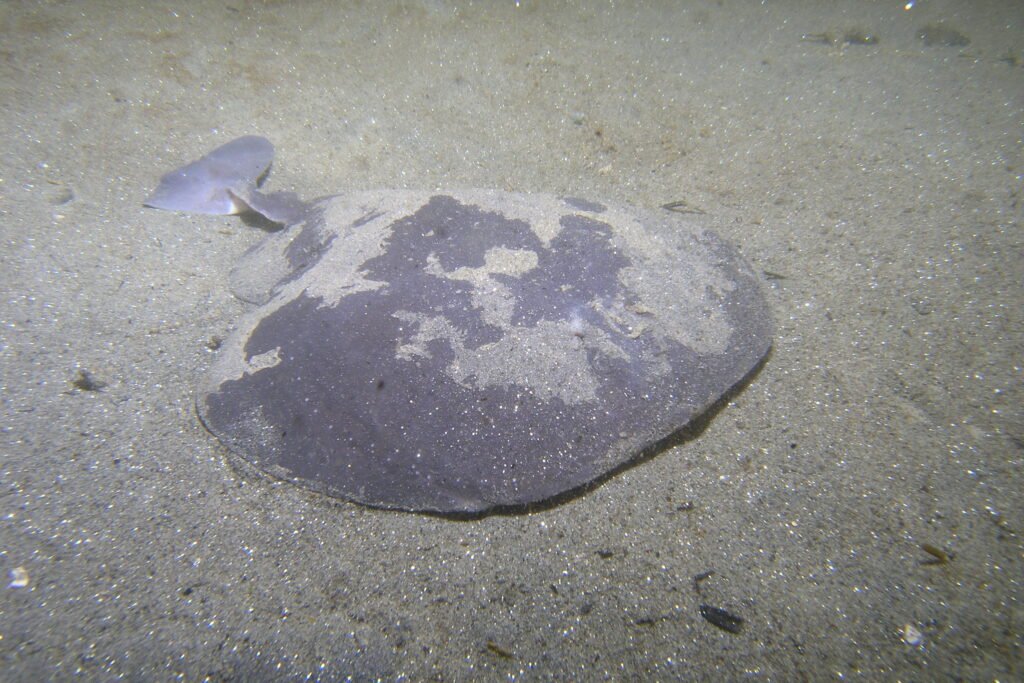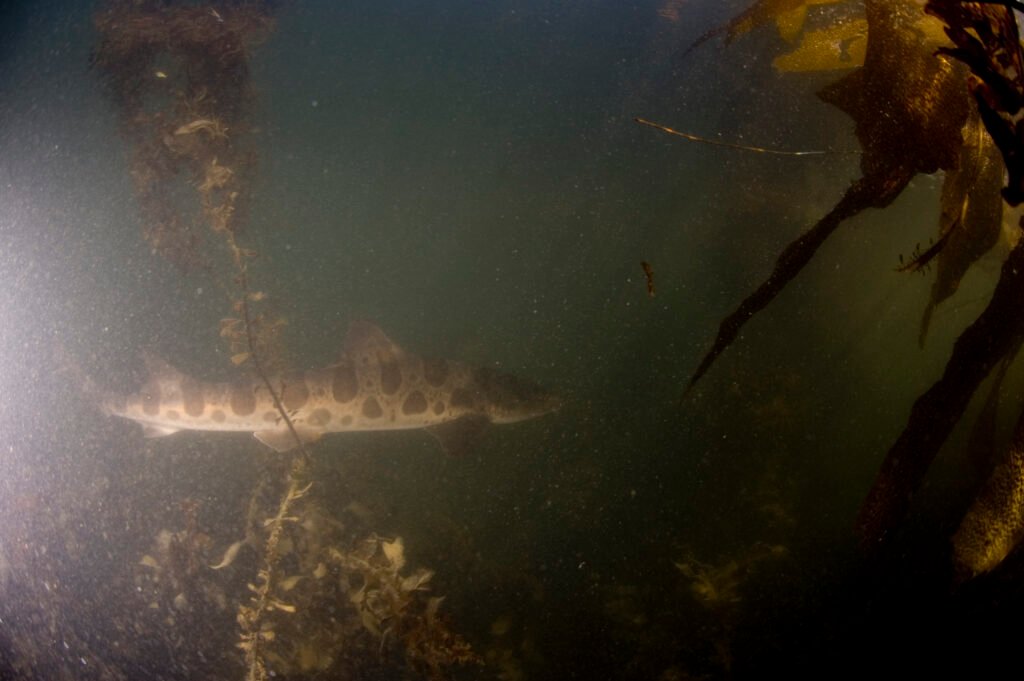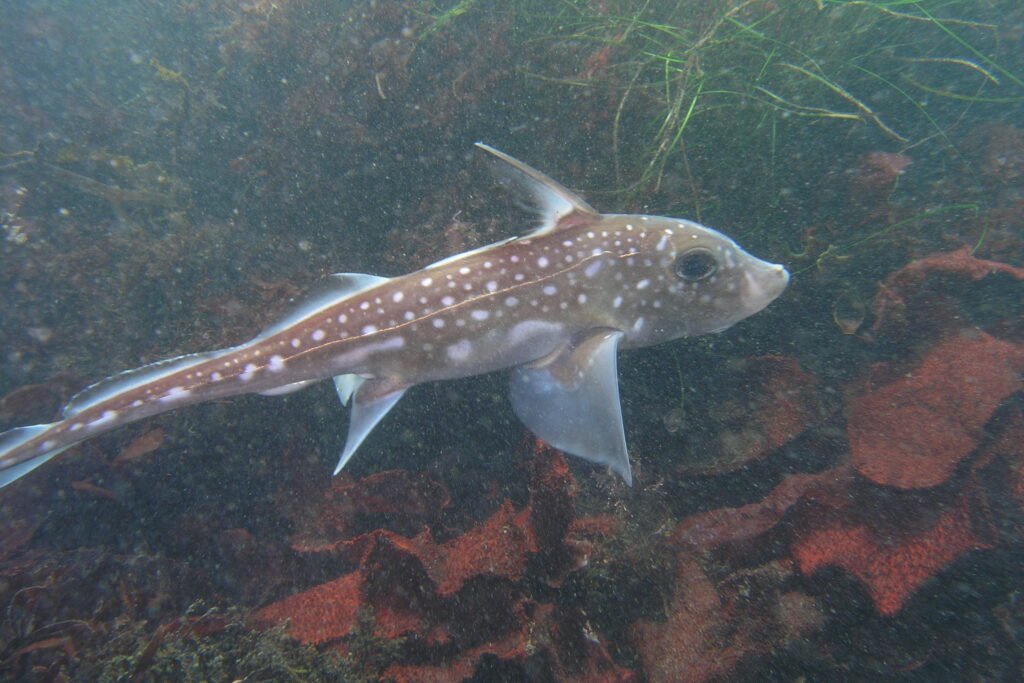Physical Description
The Bat Ray, or Myliobatis californica, showcases a distinctive appearance with a flattened body resembling bat wings. Typically, these rays measure up to 1.5 meters in width, with females often larger than males. Their upper surface ranges from dark brown to olive-green, while the underside appears lighter in coloration.
Habitat
Bat Rays favor shallow, sandy or muddy bottoms near kelp forests, rocky reefs, and bays along the eastern Pacific coast. They also venture into deeper waters, adapting to diverse marine environments prevalent in coastal and estuarine habitats.
Geographical Range
The distribution of Bat Rays spans from central California to the Baja California peninsula, thriving in temperate and subtropical regions along the western coastline of North America.
What They Eat
As opportunistic feeders, Bat Rays consume a varied diet consisting of benthic invertebrates such as clams, crabs, shrimp, and small fishes. They employ specialized dental plates to crush and consume hard-shelled prey, showcasing their adaptability to different food sources within their aquatic realm.
Physical Threat to Humans
Bat Rays are generally not considered a physical threat to humans unless provoked or startled. While they possess formidable size and strength, they are docile creatures that prefer to avoid confrontation. However, they are stingrays, and will inflict a painful wound if stepped on.




